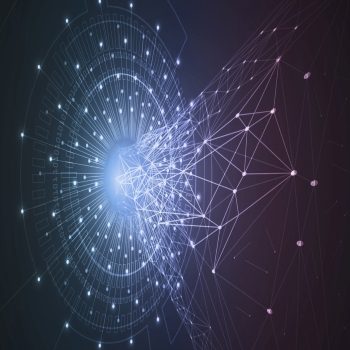Transformer Neural Networks

Deep learning is currently one of the hottest areas of research in AI. Models based on deep learning play major roles in image recognition, speech recognition, NLP and many other applications. The transformer model has emerged as one of the primary strengths of recent breakthroughs in deep learning and deep neural networks.
What is Transformer?
A transformer is a deep learning model that uses the self-attention mechanism to weight the significance of each element of the input data differently. In simple words, A transformer neural network can take an input sentence in the form of a sequence of vectors and convert it into a vector called an encoding and then decode it back into another sequence. It is largely utilized in Natural Language Processing (NLP) and Computer Vision (CV). The transformer, an encoder-decoder design based on attention layers, was described in a paper titled “Attention Is All You Need” released in 2017. For Example If the incoming data is a natural language sentence the transformer does not have to process one word at a time. This allows for more parallelization than RNNs, resulting in shorter training durations. It is mainly used for advanced applications in natural language processing. Development on larger datasets is now possible due to the additional training parallelization. This resulted in the creation of pretrained systems like BERT (Bidirectional Encoder Representations from Transformers) and GPT (Generative Pre-trained Transformer). In May 2020,Generative Pre-trained Transformer 3 (GPT-3) was introduced that uses Deep Learning to produce human-like text. The transformer model has been implemented in standard deep learning frameworks such as TensorFlow and PyTorch.Why Transformers?
Transformers are faster than (Recurrent Neural Network) RNN-based models. Training LSTMs is more challenging than training transformer networks because LSTM networks have a much larger number of parameters. Furthermore, transformers give best accuracy with less complexity and computational cost. Recently Google introduced the OptFormer, one of the first Transformer-based frameworks for hyperparameter tuning, learned from large-scale optimization data using flexible text-based representations. Their core findings demonstrate for the first time some intriguing algorithmic abilities of Transformers: 1) A single Transformer network is capable of imitating highly complex behaviors from multiple algorithms over long horizons; 2) The network is further capable of predicting objective values very accurately, in many cases surpassing Gaussian Processes, which are commonly used in algorithms such as Bayesian Optimization. For more details , click hereBenefits
- They have the potential to comprehend the link between disparate sequential parts.
- They can be trained through self-supervised learning or unsupervised methods.
- They give equal attention to each element in the sequence.
- Transformers are useful for detecting anomalies.
Applications of Transformer
The transformer model has shown success in numerous natural language processing applications such as- Machine translation is a sub-field of computational linguistics that investigates the use of software to translate text or speech from one language to another. example- google translator that gets a sequence of words in “English” that will be translated to a sequence of “French” words.
- Automatic summarization is the process of shortening a set of data computationally, to create a summary that represents the most important or relevant information within the original content like text summarization, document summarization which are used in letters, medical analysis, and financial sectors.
- Name Entity Recognition is concerned with the development of computer systems capable of producing understandable texts in English or other human languages from some underlying non-linguistic representation of information. Sid ,France, books can be an example of a Named Entity in any text data. Named entities can be of different classes like sid is the name of a person and France is the name of a place. These can be easily categorized by pretrained models like BERT which are already encoded .
- Language modeling is the task of assigning probability to sentences in a language. The goal for language modeling is for the model to assign high probability to real sentences by using dataset so that it will be able to generate fluent sentences that are close to human-level through a decoder in the transformer neural network.
- Computer Vision: Transformers have also been adapted for various vision tasks, e.g., image classification, object detection , image generation and video processing.
- Audio Applications: Transformer can also be extended for audio-related applications, e.g., speech recognition, speech synthesis , speech enhancement and music generation.
- It evolved and branched out into various distinct forms, going beyond linguistic tasks into disciplines like time series analysis and prediction, image recognition, video understanding and biological sequence analysis.
Research Perspective of Transformer
- Transformers are anticipated to witness an increase in the number of practical applications and use cases in the consumer market in the future.
- It will make a great impact on the Virtual Reality gaming environment.
- In the healthcare system, transformers will be used to detect mutations before they occur and develop vaccines to prevent them when they do exist.
- Researchers are working to reduce the time and memory needs of transformers so that the technology can be trained on machines with little memory, such as edge devices.
Sources
- https://en.wikipedia.org/wiki/Transformer_(machine_learning_model)
- https://arxiv.org/pdf/2106.04554.pdf
- https://deepai.org/machine-learning-glossary-and-terms/transformer-neural-network#:~:text=Transformer%20neural%20networks%20are%20useful,image%20captioning%2C%20and%20genome%20analysis
- https://analyticsindiamag.com/how-to-perform-named-entity-recognition-ner-using-a-transformer/
- https://towardsdatascience.com/implementing-transformer-for-language-modeling-ba5dd60389a2

